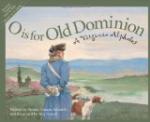A short distance beyond Sturgeon Point was the indentation in the shore marking the mouth of Kittewan Creek. Old cypress trees stepped out into the river on either side, while a row of stakes seemed to indicate the channel of the little waterway. Sounding along we went in with four feet of water under us.
Our plan was to find an anchorage a little way up the creek, and then next day to start with the rising tide for a run on up to Weyanoke. Of course Weyanoke fronted upon the James, but our idea was to make a sort of back-door landing by running up this stream and in behind the plantation. There was no sheltering cove to lie in on the river front; and besides, to make the visit at the regular pier was so hopelessly commonplace. Any of the ordinary palace yachts could do the thing that way. But it took a gypsy craft like Gadabout to wriggle up the little back-country creek and to land among the chickens and the geese and—bulls perhaps; but then all explorers must take chances.
Kittewan Creek is a marsh stream; yet for some distance in from the mouth tall cypresses stand along the reedy banks. These trees protected us from the high wind and made it easy for us to take Gadabout up the narrow watercourse.
As she moved slowly along, we were looking for an ancient tomb that we had been told stood on the left bank of the stream not far from the mouth—“the mysterious tomb of the James” some one had called it. While we could see nothing of it then, we resolved to search for it upon returning from our run up the creek to visit Weyanoke. But we were destined to see the tomb before seeing Weyanoke.
[Illustration: The forest tomb.]
[Illustration: The old Kittewan house]
Upon reaching the first bend in the stream, our tree-protection failed us and Gadabout became so absorbed in the antics of wind and tide that she paid no further heed to any suggestions on our part as to the proper way to navigate Kittewan Creek. Her notion seemed to be to run down a few fish-nets whose corks were bobbing about on the water, and then to go over and hang herself up on some cypress stumps at the edge of the marsh. We insisted upon her going a little way farther up the creek. But a compromise was all that could be effected; anchors were dropped and operations temporarily suspended on both sides.
We had a much belated dinner, and then all went ashore to make inquiries and to get supplies at a house that stood on a bluff above the bend in the stream. It proved to be a very old building and quite a landmark. It was called the Kittewan house. There, we learned that the tomb we were looking for was on the bank almost opposite where our houseboat lay.
We found it close to the creek. It was an altar-tomb, broken and timeworn and almost covered with an accumulation of earth and moss and leaves. One corner support and one side of the caving base were gone, letting ferns and lichens find a home within, tender green fronds touching the shadowing slab above them.




